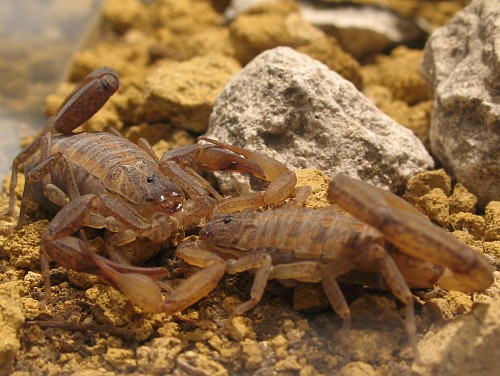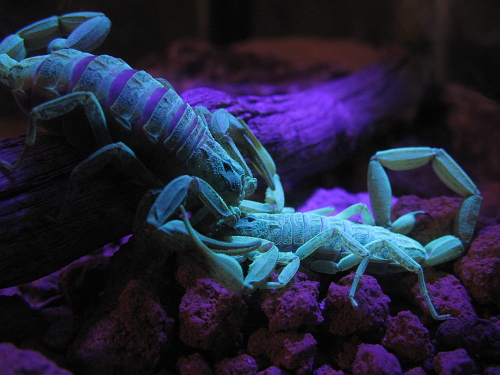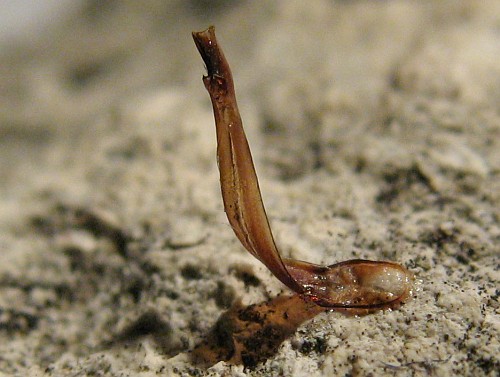

Today I gently added a male Centruroides scorpion - wild collected near Molcaxac, Puebla the 18th of Februari last year - to the terrarium which houses a female scorpion of the same species, originally from the same location.

The scorpion male wandered around, and detected with its pectines - structures underneath its body that look like feathers, acting as both mechanoreceptors and chemoreceptors - that a female scorpion was living nearby. I think it's correct to write: the male detected the pheromones of the female. The male started to look for the female, now and then making a rapid shaking motion with it's body (juddering). This causes vibrations which the female can detect, and from what I've read, also increases diffusion of the male pheromones.

Shortly after I had introduced the male scorpion, it found the female, and grabbed her chelae (claws) with his chelae, and the mating dance started. The scorpions stopped the dance now and then, maybe because of the (relatively) low temperature in our apartment. After I had taken several photos, I used my homebrew portable UV light source with LEDs to take a few photos with the scorpions under UV light. The above photo is not color corrected, as described in Scorpions under UV light: making better photos, so the colors are shifted too much towards blue.

After (quite) some time, the couple moved, male holding female, to a flat piece of stone which the male used to attach a spermatophore onto. Shortly after the male scorpion had dragged the female on top of the spermatophore, the couple broke up, and I moved the male scorpion back to its own terrarium,

Next, I carefully lifted the flat piece of stone out of the enclosure of the female to take several close-up photos of it. The above one is the best out of a series of 14.
The entire mating process of the two scorpions took just over 4 hours.